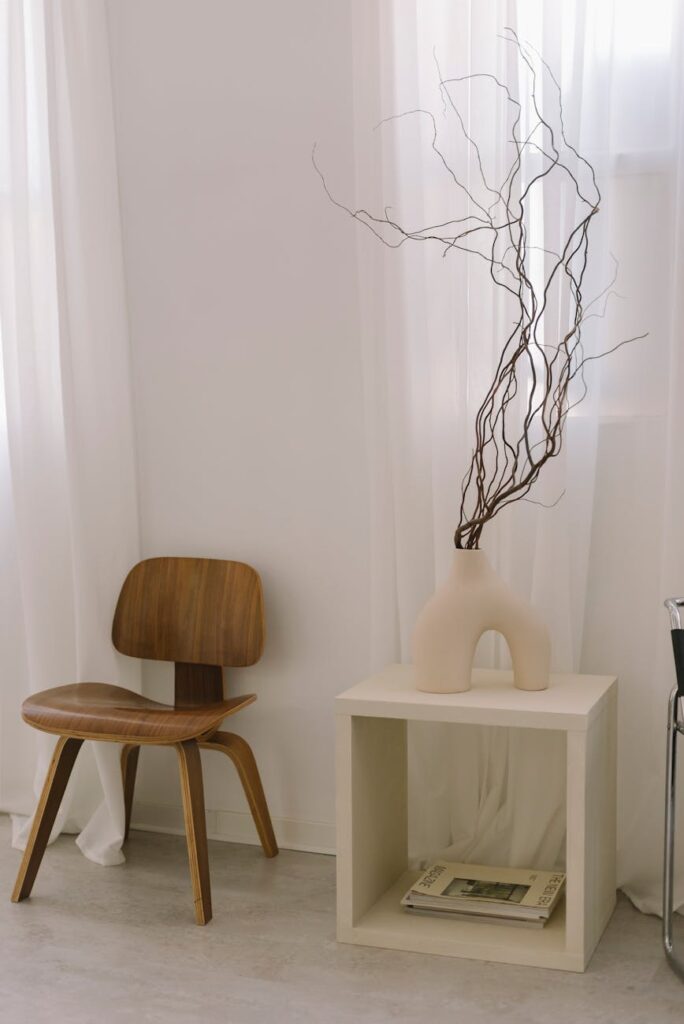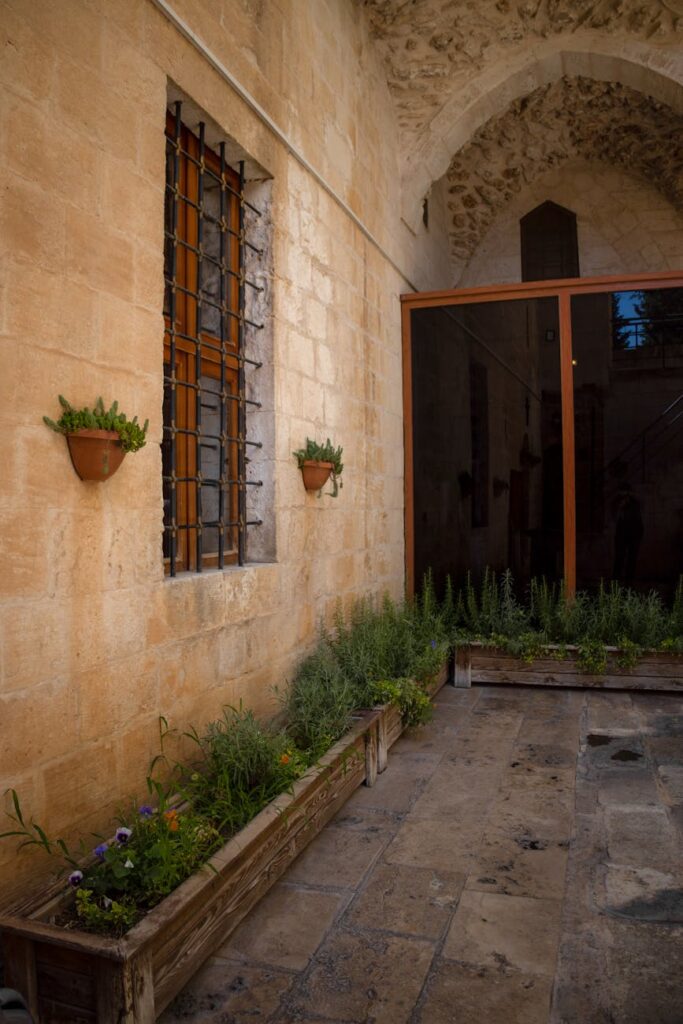The Most Peaceful Architectural Styles Around the World
Ever walked into a space and just… exhaled? That feeling of instant calm, where your shoulders drop and the noise in your head quiets down, isn’t an accident. It’s often the result of very intentional design. The truth is, the buildings we inhabit have a profound effect on our mental state. They can make us feel agitated and stressed, or they can guide us toward a state of peace. This is where the magic of peaceful architectural styles comes in, proving that a home can be more than just shelter; it can be a sanctuary.
We’re not just talking about slapping a coat of beige paint on the walls and calling it a day. We’re talking about design philosophies honed over centuries, from the misty mountains of Japan to the sun-drenched coasts of the Mediterranean. These styles understand the human need for light, nature, simplicity, and order. They create a dialogue between the inside and the outside, between the man-made and the natural world, resulting in spaces that feel fundamentally right.
Key Takeaways
- Peaceful architecture prioritizes simplicity, natural light, and a strong connection to the outdoors.
- Styles like Japanese Zen and Scandinavian Minimalism use a ‘less is more’ approach to reduce mental clutter.
- Natural materials such as wood, stone, and linen are crucial for creating a sense of warmth and grounding.
- The layout of a space, including flow and sightlines, can significantly impact feelings of calm and security.
- You can incorporate principles from these styles into your own home, regardless of its size or location.
1. Japanese Architecture: The Art of Zen and Wabi-Sabi
When you think of tranquility, your mind might immediately conjure images of Japan. And for good reason. Traditional Japanese architecture is perhaps the ultimate expression of peace in built form. It’s not about opulence; it’s about restraint, harmony, and a deep, abiding respect for nature. Two core philosophies guide this approach: Zen and Wabi-Sabi.
The Simplicity of Zen
Zen principles in architecture focus on decluttering the physical space to declutter the mind. Think clean lines, uncluttered surfaces, and a deliberate lack of ornamentation. The goal is to create a space for contemplation and mindfulness. This is achieved through several key elements:
- Shoji Screens: These iconic sliding panels made of translucent paper on a wooden frame are genius. They diffuse light beautifully, creating a soft, ethereal glow. They also provide flexibility, allowing rooms to be opened up or closed off, transforming the space as needed.
- Open Floor Plans: Traditional Japanese homes often have a fluid layout, promoting a sense of freedom and flow rather than confinement.
- Meticulous Order: Everything has its place. This isn’t about rigid sterility but about creating a sense of order that calms the nervous system.
Embracing Imperfection with Wabi-Sabi
If Zen is about serene order, Wabi-Sabi is its earthy, soulful cousin. It’s a worldview centered on the acceptance of transience and imperfection. In architecture, this translates to an appreciation for materials that age gracefully. It’s the weathered wood of a porch, the moss growing on a stone lantern, the subtle crack in a ceramic tea bowl. Wabi-sabi tells us that these imperfections aren’t flaws; they’re marks of time and history, and they hold a unique beauty. It’s a powerful antidote to our modern obsession with flawless, mass-produced objects.
The connection to nature is non-negotiable. An engawa, or veranda, acts as a transitional space between the home and the garden, blurring the lines between indoors and out. Large windows are carefully placed to frame views of a maple tree or a patch of moss, turning nature into living art. It’s a masterclass in living with nature, not just next to it.

2. Scandinavian Design: Cozy Minimalism and Hygge
Travel north to the lands of long, dark winters, and you’ll find a different kind of peace—one born from a need for light, warmth, and comfort. Scandinavian architecture and design are globally renowned for their beautiful simplicity, but it’s the underlying philosophy that makes them so calming.
Light is Everything
In a region where sunlight is a precious commodity for much of the year, maximizing it is a top priority. This translates to large, unadorned windows, light-colored walls (often white or soft gray), and reflective surfaces. The goal is to bounce as much natural light around the room as possible, creating a space that feels airy, open, and optimistic, even on the gloomiest of days.
Hygge: The Soul of Comfort
You’ve probably heard of hygge (pronounced hoo-gah), the Danish concept of coziness and contentment. It’s a crucial ingredient in Scandinavian design. While the overall aesthetic is minimalist, it’s a warm and inviting minimalism. This is achieved through:
- Natural Textures: Think chunky wool blankets, soft linen cushions, sheepskin rugs, and warm wood grains. These tactile elements prevent the space from feeling cold or sterile.
- Functionalism: Every piece of furniture has a purpose. There is no room for clutter. This philosophy, famously championed by brands like IKEA, ensures that the space is as practical as it is beautiful. This inherent functionality reduces stress by making daily life simpler.
- A Neutral Palette: The color scheme is typically muted, drawing from nature—whites, grays, pale blues, and earthy tones. This creates a soothing backdrop for daily life.
“Have nothing in your house that you do not know to be useful, or believe to be beautiful.” – William Morris. This quote, though from an English designer, perfectly encapsulates the Scandinavian approach.

3. Mediterranean Style: Sun, Shade, and Courtyards
Head to the sun-drenched coasts of Greece, Italy, and Spain, and you’ll find an architectural style shaped by a very different climate. Mediterranean architecture is designed to keep inhabitants cool and comfortable while celebrating an indoor-outdoor lifestyle. It’s a style that feels both ancient and effortlessly relaxed.
The first thing you’ll notice is the use of thick, whitewashed walls. These aren’t just for looks; the substantial mass of stucco or adobe walls absorbs the sun’s heat during the day and slowly releases it at night, helping to regulate the indoor temperature. The white color reflects sunlight, further keeping the interior cool.
The Heart of the Home: The Courtyard
Perhaps the most peaceful element of Mediterranean design is the central courtyard, or patio. This private outdoor space acts as the heart of the home. Often featuring a fountain or a small pool, the sound of trickling water provides a soothing acoustic backdrop, masking noise from the outside. The courtyard creates a microclimate, offering a shady, cool retreat from the harsh midday sun. It’s a perfect example of passive cooling and a testament to designing in harmony with the environment.
Elements of Mediterranean Serenity
Other key features contribute to the style’s tranquil vibe:
- Arches and Curves: Unlike the hard lines of modernism, Mediterranean architecture often features soft, rounded arches in doorways and windows, which feel more organic and gentle to the eye.
- Natural Materials: Terracotta tiles, wrought iron, and heavy wooden beams are staples. These materials are rustic, durable, and connect the home to the earth.
- Connection to the Landscape: Balconies, terraces, and pergolas covered in bougainvillea or grapevines extend the living space outwards, encouraging residents to enjoy the fresh air and scenic views.
4. Islamic Architecture: Geometry, Gardens, and Inner Worlds
Often associated with grand mosques and palaces, the principles of Islamic architecture also create some of the most serene residential spaces on earth. A core theme is the creation of an inward-looking sanctuary, a private paradise shielded from the harshness of the outside world—be it a bustling city or a desert landscape.
The Beauty of Intricate Patterns
One of the most recognizable features is the use of complex geometric patterns (arabesques) and calligraphy. Far from being distracting, these intricate designs are meant to be contemplative. Their mathematical precision and repeating motifs can have a mesmerizing, meditative effect, drawing the eye and quieting the mind. They adorn walls, tiles (zellige), and carved wooden screens (mashrabiya), which filter light and provide privacy.
The Courtyard Garden (Riad)
Similar to the Mediterranean style, the courtyard is central. In a traditional Moroccan riad, the entire house is built around a central garden courtyard, often with a fountain at its center. All windows and doors face this internal space, creating a completely private and secure environment. The four-part garden layout, known as a chahar bagh, is symbolic of paradise, with water channels representing the four rivers of Eden. This fusion of water, shade, and fragrant plants creates a multi-sensory oasis of calm.
5. Shaker Architecture: A Vow of Simplicity
For an American take on peaceful architectural styles, we can look to the Shakers. This religious community, which flourished in the 19th century, believed that making something well was in itself an act of prayer. Their architecture and furniture are the embodiment of radical simplicity and functionality.
There is absolutely zero ornamentation. Beauty was found in utility and craftsmanship. The result is a style that feels incredibly pure and honest. Key features include:
- Clean, Symmetrical Lines: Shaker buildings are orderly and balanced, which is inherently pleasing to the human eye.
- Innovative Storage: Famous for their built-in cabinets and peg rails that line the walls, the Shakers were masters of organization. This system allowed for chairs, tools, and other items to be hung up, keeping the floor clear and the space uncluttered. It’s a minimalist’s dream.
- Natural Light: Large, multi-paned windows were strategically placed to allow for maximum daylight, essential for their craftwork.
The Shaker style is a powerful reminder that peace can be found in simplicity and that a well-ordered environment can contribute to a well-ordered mind.
6. Biophilic Design: The Innate Need for Nature
While not a historical style in the same vein as the others, biophilic design is a modern principle that underpins many of them. It’s based on the idea that humans have an inherent biological need to connect with nature—a concept called ‘biophilia’.
Biophilic design seeks to integrate nature into the built environment to improve our well-being. This goes far beyond just putting a few potted plants on a windowsill. It’s about creating a holistic ecosystem within a building. This can involve:
- Direct Connection: Living walls, indoor gardens, and water features.
- Indirect Connection: Using natural materials like wood and stone, choosing colors from nature, and providing natural light.
- Symbolic Connection: Using naturalistic patterns and forms in decor and architectural details.
Studies have shown that spaces incorporating biophilic design can reduce stress, improve cognitive function, and enhance creativity. It’s the science behind why a room with a view of a park feels so much better than one facing a brick wall.
Conclusion
What do a Japanese teahouse, a Swedish cabin, and a Greek villa have in common? They all understand a fundamental truth: our surroundings shape our experience. The most peaceful architectural styles aren’t about following trends; they’re about creating environments that cater to our deepest human needs for security, simplicity, and a connection to the natural world. Whether it’s the imperfect beauty of Wabi-Sabi or the cozy comfort of Hygge, these design philosophies offer timeless lessons. By incorporating their principles—embracing natural light, decluttering our spaces, and bringing the outdoors in—we can all transform our homes into true sanctuaries of peace.


 Kneading Dough Therapy: A Baker’s Travel Guide
Kneading Dough Therapy: A Baker’s Travel Guide  Rediscovering Your City: A Tourist’s Guide to Home
Rediscovering Your City: A Tourist’s Guide to Home  Plan a Relaxing Getaway on Your Daily Commute
Plan a Relaxing Getaway on Your Daily Commute  The Digital Postcard: A Guide to Mindful Photo Sharing
The Digital Postcard: A Guide to Mindful Photo Sharing  Beat Museum Burnout: Enjoy Your Visit Without Exhaustion
Beat Museum Burnout: Enjoy Your Visit Without Exhaustion  A Guide to the World’s Most Beautiful Fountains
A Guide to the World’s Most Beautiful Fountains  Social Media on Blockchain: The Next Digital Frontier
Social Media on Blockchain: The Next Digital Frontier  What is a Flash Loan? A DeFi Deep Dive for Beginners
What is a Flash Loan? A DeFi Deep Dive for Beginners  Crypto Swing vs Day Trading: Which Style Wins?
Crypto Swing vs Day Trading: Which Style Wins?  A Guide to NFT Generative Art Platforms (2024)
A Guide to NFT Generative Art Platforms (2024)  Crypto’s Carbon Footprint: The Real, Nuanced Story
Crypto’s Carbon Footprint: The Real, Nuanced Story  Join a Web3 Community: The Ultimate Networking Guide
Join a Web3 Community: The Ultimate Networking Guide